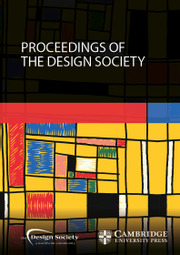Article contents
COMPARING LIFE CYCLE IMPACT ASSESSMENT, CIRCULARITY AND SUSTAINABILITY INDICATORS FOR SUSTAINABLE DESIGN: RESULTS FROM A HANDS-ON PROJECT WITH 87 ENGINEERING STUDENTS
Published online by Cambridge University Press: 27 July 2021
Abstract
Considering a growing number of metrics and indicators to assess circular economy, it is of paramount importance to shed light on how they differ from traditional approaches, such as life cycle assessment (LCA) or sustainability performance indicators. This study provides new empirical insights on the correlation between LCA, circularity, and sustainability indicator-based approaches. Specifically, the importance lies in analyzing how the results generated by these different approaches can be used to support the design of products that are not only circular, but also sustainable. A practice-based project involving 87 engineering students (divided into 20 groups) is conducted with the aim to compare and improve the circularity and sustainability performance of three product alternatives of lawn mowers (gasoline, electric, autonomous). To do so, the following resources are deployed: 18 midpoints environmental indicators calculated by LCA, eight product circularity indicators, and numerous leading sustainability indicators. Critical analyses on the usability, time efficiency, scientific soundness, and robustness of each approach are drawn, combining quantitative results generated by each group with the feedback of future engineers.
- Type
- Article
- Information
- Creative Commons
- This is an Open Access article, distributed under the terms of the Creative Commons Attribution-NonCommercial-NoDerivatives licence (http://creativecommons.org/licenses/by-nc-nd/4.0/), which permits non-commercial re-use, distribution, and reproduction in any medium, provided the original work is unaltered and is properly cited. The written permission of Cambridge University Press must be obtained for commercial re-use or in order to create a derivative work.
- Copyright
- The Author(s), 2021. Published by Cambridge University Press
References
- 9
- Cited by


